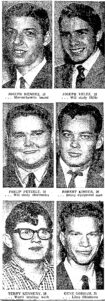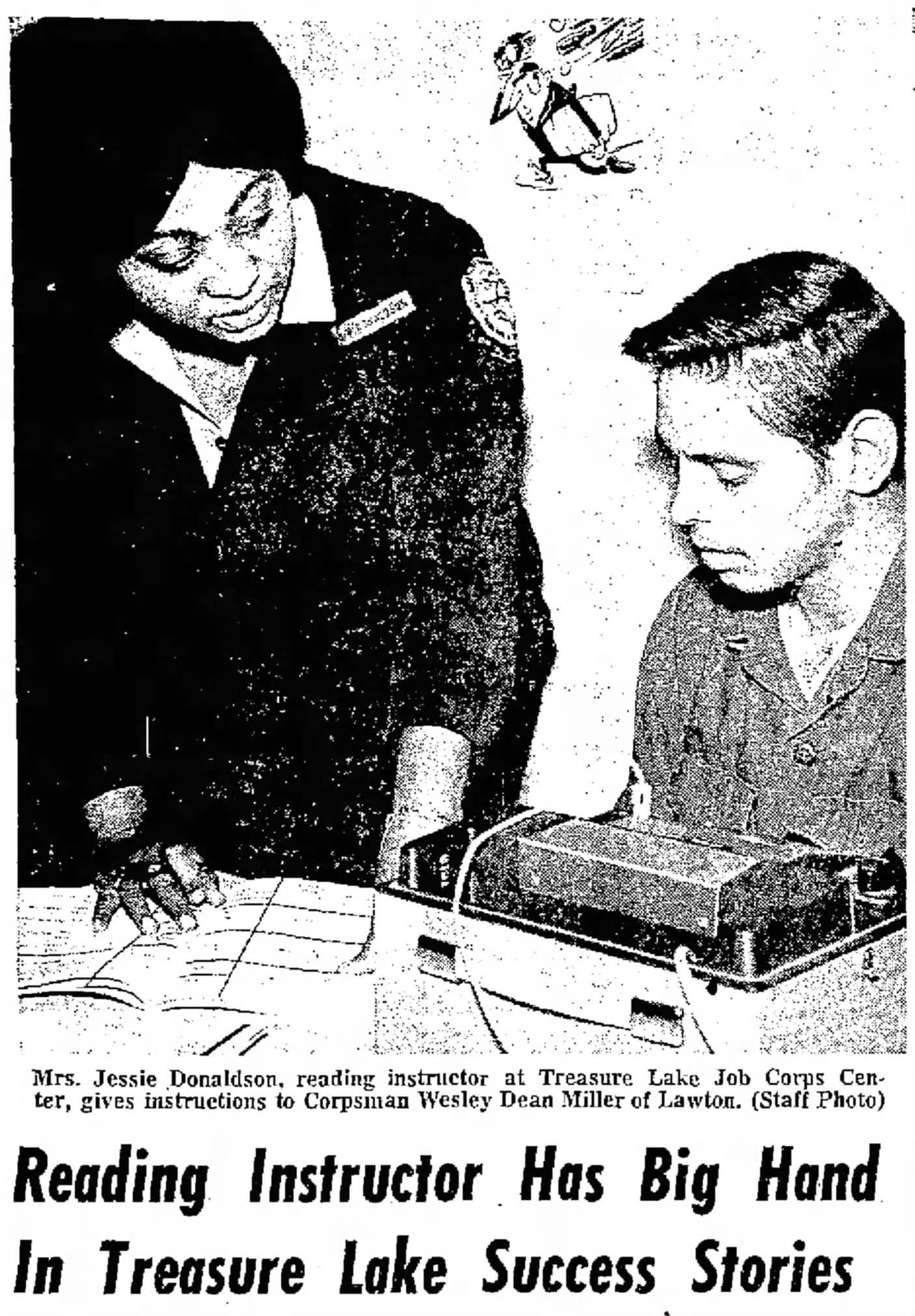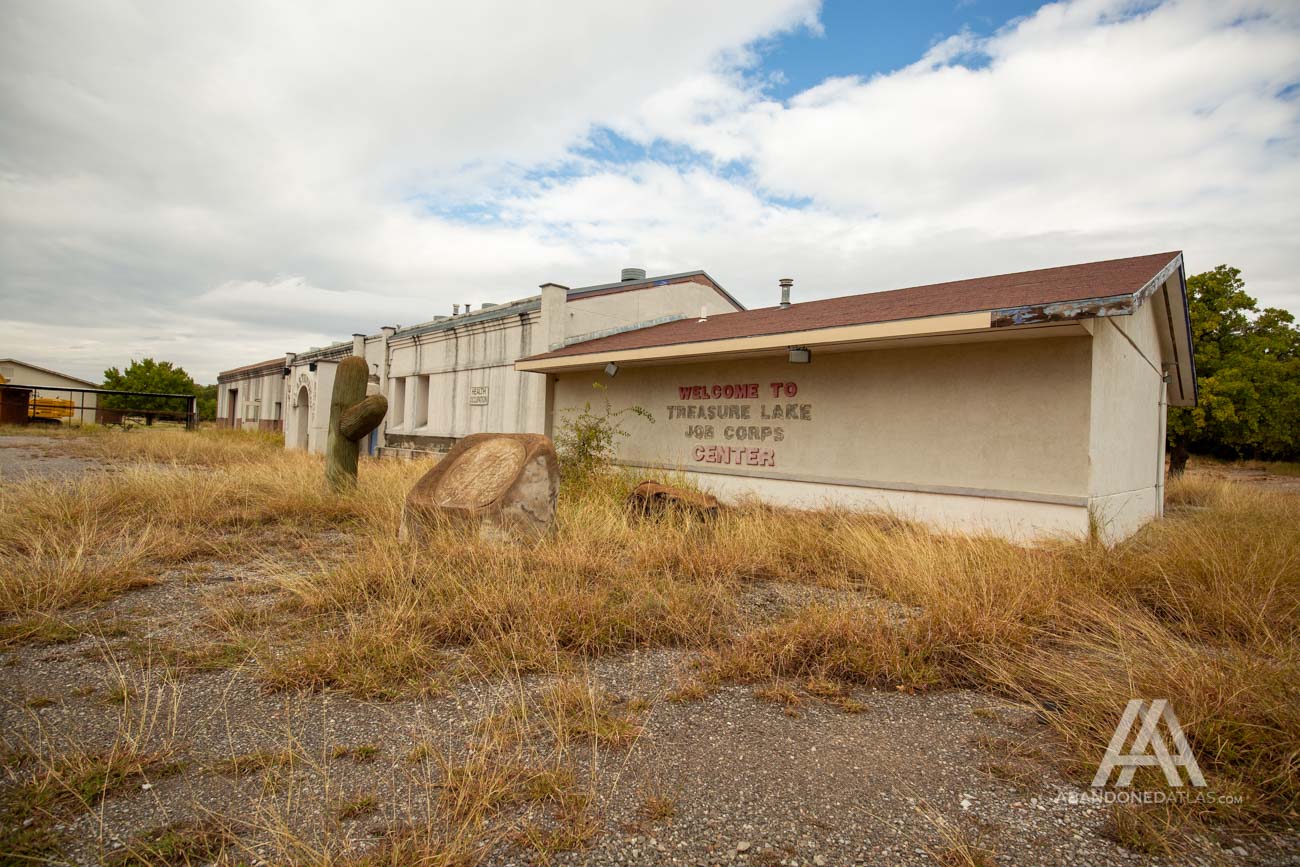| City/Town: • Indiahoma |
| Location Class: • Government |
| Built: • 1965 | Abandoned: • 2014 |
| Status: • Demolished |
| Photojournalist: • Michael Schwarz • Jeff Hodge |
Located in Southwestern Oklahoma sits the Wichita Mountains Wildlife Refuge, an ethereal landscape where one can be transported back into days of the Wild West. Before bustling cities filled with skyscrapers and honking horns took over land, there were prairies filled with roaming herds of bison, elk and flocks of native birds. The perfect place to clear your head and seemingly get your life back on track. These might have been some of the reasons it was chosen as the perfect secluded location for the Treasure Lake Job Corps Center in Oklahoma.
Initially, officials at the Museum of the Great Plains drew concerns that the site picked for Treasure Lake was used as a camp for early peoples. Insisting on further studies to see if the site was archaeologically significant. If it was proven to be so, submissions would be made to the NPS to protect the site. The sites, numbered CM 2 and CM 3 were reported in 1955 by E.B. Morgan and Nell Dotts, then amateur archaeologists. Projectile points, scrapers and pottery shards were found by the two on the site. Then Refuge Manager Julian Howard was of utmost cooperation of the investigations to make sure if needed the site would be moved. No interference was met as the sites were located outside of the TLJCC boundaries and construction proceeded.
Ground broke on the site in the spring of 1965, excavators and bulldozers moved mounds of dirt for space for 14 buildings and a paved road to the campus. Named after the beautiful nearby Treasure Lake, which is said to be one of the most beautiful spots throughout the entire refuge, construction workers were careful not to disrupt any soil outside of the site so the impact on the environment could be as contained to the campus as possible. It was one of the only sites in the Refuge that supplied enough water for the camp to function receiving its supply from the Post Oak and Treasure Lakes. This would be one of the first job corps centers in the entire nation and would cost upwards of $380,000.
Some of the labor-intensive work such as the sewage lagoon and water lines was done by the lowest bidder Triple L Construction Co. The center would be for poverty and troubled youths aged 16-21, most school dropouts. In its first year it paved the way for around 100 youths to learn new trade skills in hopes of turning their lives around. Upon arrival they had a week of orientation as well as tours of the center and refuge. Rules, safety regulations and first aid were studied and then academic levels were tested to assess what classes they would need to take in the academic program provided.
Known as the ‘ Job Corpsmen’ they would work on conservation projects within the refuge including trail building, constructing picnic tables, cleaning up brush and other groundwork. But this was a place where work and play mixed with recreational activities including swimming, billiards, ping pong and a gymnasium in addition to the vast amounts of trails and nature to explore.

The corpsmen’s first major project on the refuge was known as the Burford Project. Clearing out brush and the forming of numerous trails and campground areas overlooking Burford Lake made for some stunning views. Even today the Burford area of the refuge is still active and gorgeous. The underbrush that was cleared from the site was split and stacked at the campsites to be reused as firewood for campers. The trails were lined with stone and gravel and partial would be carved out of granite boulders near the dam. Other plans in the project called for a new road to the campsite and 12-15 concrete picnic tables.
The first graduates of the program included Philip Petzelt who left Treasure Lake to go onto Parks Urban Center in California to study electronics. Joseph Mendez and Joseph Velez both went on to the Rodman Urban Center in Massachusetts to study IBM machine operation. Terry Kennedy who wanted to become a nurse remained at Treasure Lake to work in the infirmary while officials worked to get him into an apprenticeship. Robert Kinder remained working in the Treasure Lake shop on welding and automotive etc until an opening in the Fort Custer Urban Center opened up. Gene Gorham wanted to become a resident worker in a jobs corps center and went on to work on getting his credentials.
The public was given a tour by the corpsmen of the center just a few years after opening. This was a great way to get the public out to see the new facility and the great work the center was doing for the young men. It was also a way to introduce the new campgrounds, such as Burford, created by the men to the public. At that point there were about 175 enrolled men in the program. Treasure Lake had helped turn many of these men’s lives around with giving them the tools to succeed in a career field. But work was not the only thing they did at the center, they also had many of their own sports teams with their boxing team bringing home 3 championship titles in the late ’60s. By 1970 TLJCC ranked first in the nation for placing graduates in jobs. It had a record of placing 82.1% of trainees in jobs while average placement for the nation was 68%.
With the centers’ huge success, it was necessary to expand with the influx of new enrollees in the program and in the early 1970s a new dormitory was constructed. The construction, initiated by the US Forestry Service aimed at blending in with the natural surroundings. And the construction was done by the corpsmen in the carpentry program while the electricity, air conditioning etc were done by outside companies. The one-story building would have wooden exterior walls with a shingled roof. Inside would have 5-foot portions that separated the large room into 4-5 “bays.” Another project undertaken was the construction of a residence at the headquarters, also with work done by the corpsmen.

Another expansion of buildings happened in the mid and late ’70s. Of those buildings, one of the most important was that of a vocational school building. Giving more experience in carpentry, construction, roofing etc. to the corpsmen with being able to help construct the facility. Also done around the same time was a brand new mess hall and dormitory.
In the fall of 2014 news broke that the Department of Labor intended to close the center for at-risk youth. In a study of numerous Job Corps across the US, it was decided several were to be closed, renovated, or improved in other ways such as the one in Little Rock that moved to a new location from a former hotel it had been in for almost 30 years. Treasure Lake was producing less than adequate numbers for the years following the 2008-09 recession. Numbers showed less than half of students completing their job training and only ~55% of those that did complete training found jobs in their field. Treasure Lake had been consistently ranking on the lower end of the scale out of 125 centers.
Representatives of the facility initially didn’t think the closure would go through with Lance Hamann and Kristi Caudel blaming the poor performance records on two factors. One being that Treasure Lake has the ability to send their attendees to help during natural disasters, prolonging their training which in turn affects their performance report. This was changed with a bill passed by Congress that would take effect the next year. Caudel argued that the change soon going into effect it shouldn’t count against them now. The second reason being poor leadership in the years leading up which they were still working to fix.
After a 30-day waiting period for public input and rebuttal to the closure, the decision was solidified and closure of the center was imminent. For the next 8 years, the campus would fall into a neglected abandoned state while the Department of Labor and the Department of the Interior worked to determine ownership and responsibility for the abandoned campus, suffering at the hands of scrappers and vandalism over time. In 2021 the Wichita Mountains Wildlife Refuge made an official proposal to demolish the campus and return the land to its natural state. A period of 30 days for public comments was opened up and the project was approved.
The Refuge did not take this process lightly, waiting a year to even start asbestos abatement. Early on they put emphasis on the importance of documenting the campus and its history working side by side with SHPO and ourselves to thoroughly photograph and create written and oral history of the site to commemorate its significance to the area for over 50 years. We cannot thank Amber Zimmerman, Deputy Refuge Manager, for working diligently to preserve the history of the Treasure Lake Job Corps and allowing us to be a part of this project with many more to come! Keep an eye out for updates on the property as well as other historic structures on the refuge that are soon to be documented through a collaborative effort by ours and Amber’s team.
Gallery Below of Treasure Lake Job Corps Center
“The Cache Wichitan 15 Sep 1967, Page 1.” Historical Newspapers from 1700s-2000s – Newspapers.com, www.newspapers.com/image/791573016/?terms=%22treasure%20lake%22%20job&match=1&clipping_id=113510762.
“The Cache Wichitan 28 Jul 1967, Page 1.” Historical Newspapers from 1700s-2000s – Newspapers.com, www.newspapers.com/image/791572917/?terms=%22treasure%20lake%22%20job&match=1&clipping_id=113510740.
“The Daily Oklahoman 25 Apr 1983, Page 5.” Historical Newspapers from 1700s-2000s – Newspapers.com, www.newspapers.com/image/452419876/?terms=%22treasure%20lake%22%20job&match=1.
“The Lawton Constitution 01 Mar 1970, Page Page 1.” Historical Newspapers from 1700s-2000s – Newspapers.com, www.newspapers.com/image/23055920/?terms=%22treasure%20lake%22%20job&match=1.
“The Lawton Constitution 14 Jul 1975, Page Page 1.” Historical Newspapers from 1700s-2000s – Newspapers.com, www.newspapers.com/image/22924148/?terms=%22treasure%20lake%22%20job&match=1.
“The Lawton Constitution 15 Nov 1973, Page Page 30.” Historical Newspapers from 1700s-2000s – Newspapers.com, www.newspapers.com/image/36645537/?terms=%22treasure%20lake%22%20job&match=1.
“The Lawton Constitution 17 Nov 1965, Page Page 32.” Historical Newspapers from 1700s-2000s – Newspapers.com, www.newspapers.com/image/22353925/?terms=%22treasure%20lake%22%20job&match=1.
“The Lawton Constitution 19 Dec 1966, Page Page 20.” Historical Newspapers from 1700s-2000s – Newspapers.com, www.newspapers.com/image/21700575/?terms=%22treasure%20lake%22%20job&match=1&clipping_id=113510631.
“The Lawton Constitution 20 Nov 1976, Page Page 1.” Historical Newspapers from 1700s-2000s – Newspapers.com, www.newspapers.com/image/36685529/?terms=%22treasure%20lake%22%20job&match=1.
“The Lawton Constitution 23 Sep 1971, Page Page 1.” Historical Newspapers from 1700s-2000s – Newspapers.com, www.newspapers.com/image/31177813/?terms=%22treasure%20lake%22%20job&match=1&clipping_id=113511018.
“The Lawton Constitution 25 Jan 1968, Page Page 14.” Historical Newspapers from 1700s-2000s – Newspapers.com, www.newspapers.com/image/36542636/?terms=%22treasure%20lake%22%20job&match=1.
“The Lawton Constitution 26 Jul 1972, Page Page 1.” Historical Newspapers from 1700s-2000s – Newspapers.com, www.newspapers.com/image/36562417/?terms=%22treasure%20lake%22%20job&match=1.
“The Lawton Constitution 30 Apr 1968, Page Page 32.” Historical Newspapers from 1700s-2000s – Newspapers.com, www.newspapers.com/image/36551029/?terms=%22treasure%20lake%22%20job&match=1.
“The Lawton Constitution 30 Sep 1971, Page Page 26.” Historical Newspapers from 1700s-2000s – Newspapers.com, www.newspapers.com/image/31180155/?terms=%22treasure%20lake%22%20job&match=1.
“The Lawton Constitution And Morning Press 09 Apr 1972, Page Page 38.” Historical Newspapers from 1700s-2000s – Newspapers.com, www.newspapers.com/image/38849023/?terms=%22treasure%20lake%22%20job&match=1.
“The Lawton Constitution And Morning Press 10 Jul 1966, Page Page 33.” Historical Newspapers from 1700s-2000s – Newspapers.com, www.newspapers.com/image/38800303/?terms=%22treasure%20lake%22%20job&match=1&clipping_id=113510186.
“The Lawton Constitution And Morning Press 16 Aug 1964, Page Page 9.” Historical Newspapers from 1700s-2000s – Newspapers.com, www.newspapers.com/image/12583205/?terms=%22treasure%20lake%22%20job&match=1.
“The Lawton Constitution And Morning Press 19 Dec 1965, Page Page 34.” Historical Newspapers from 1700s-2000s – Newspapers.com, www.newspapers.com/image/38802055/?terms=%22treasure%20lake%22%20job&match=1.
“The Lawton Constitution And Morning Press 28 Mar 1965, Page Page 24.” Historical Newspapers from 1700s-2000s – Newspapers.com, www.newspapers.com/image/38799315/?terms=%22treasure%20lake%22%20job&match=1.
Swoknews.com | Your Source For Information In Southwest Oklahoma, www.swoknews.com/community_news/wildlife-refuge-seeks-public-comments-on-proposal/article_f9fcf6a7-03b4-53c1-959e-98686cbdb98f.html.
“Treasure Lake Job Corps Faces Possible Closure.” Https://www.kswo.com, 22 Sept. 2014, www.kswo.com/story/26598786/treasure-lake-job-corps-faces-possible-closure/.
“The Walters Herald 24 Dec 1964, Page 10.” Historical Newspapers from 1700s-2000s – Newspapers.com, www.newspapers.com/image/743448578/?terms=%22treasure%20lake%22%20job&match=1.
The Washington Post, 28 Aug. 2014, www.washingtonpost.com/news/federal-eye/wp/2014/08/28/job-corps-closing-troubled-center-in-oklahoma/.
If you wish to support our current and future work, please consider making a donation or purchasing one of our many books. Any and all donations are appreciated.
Donate to our cause Check out our books!












I was a carpenter on My Taylor’s carpentry crew. These pictures bring tears to my eyes. This place not only changed my life but built friendships that have lasted more than 30 years.
This place changed my life. I was kicked out of the navy for drugs in 99. I took the plumbing course under Billy Don , think his last name was Caudill. Big strong dude. Now I run my own plumbing business. If it wasn’t for this place who knows where many of us would be. I think it’s appropriate. The campus back then was starting to be about drugs and hanging out. To see it reverted back to nature is what she deserves. I went down last week and walked around. Won’t be much longer now.
It is ridiculous that they are going to tear it all down. The cafeteria costed millions and was just built a couple years before it closed. The government is so wasteful. They are spending millions to tear the center down and at the same time building a brand new headquarters by the visitor center. It would have been better to remodel the job corps buildings and use them as the headquarters.
My name is Devin shrubs I was a bricklayer here under Chris Meehan. It’s a shame they tearing it down. This place stop me from going down the wrong path in life. The students and staff here showed me how to be a man in life !
I appreciate the article. I studied to be an apprentice electrician at Treasure Lake in early 2008, and the pictures brought back a lot of memories. I may have some firsthand insight into the failings which ultimately led to the closure of this facility, if you’re at all interested.